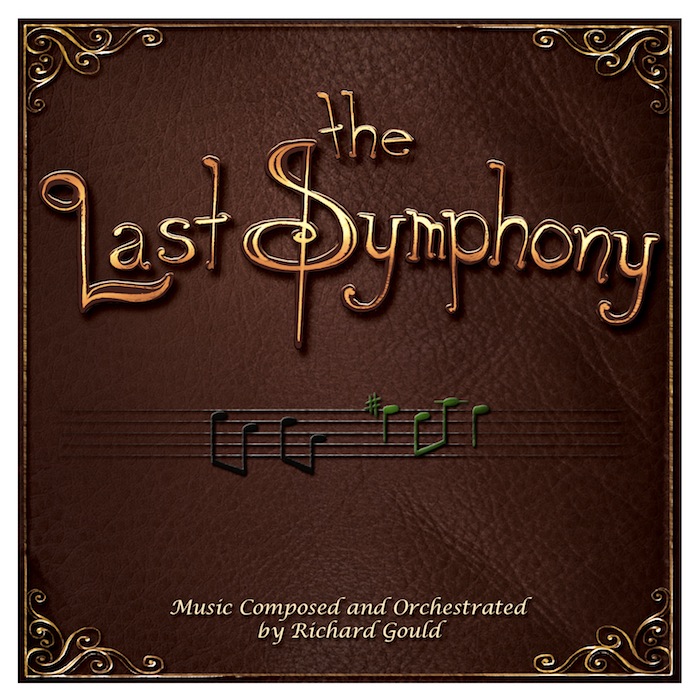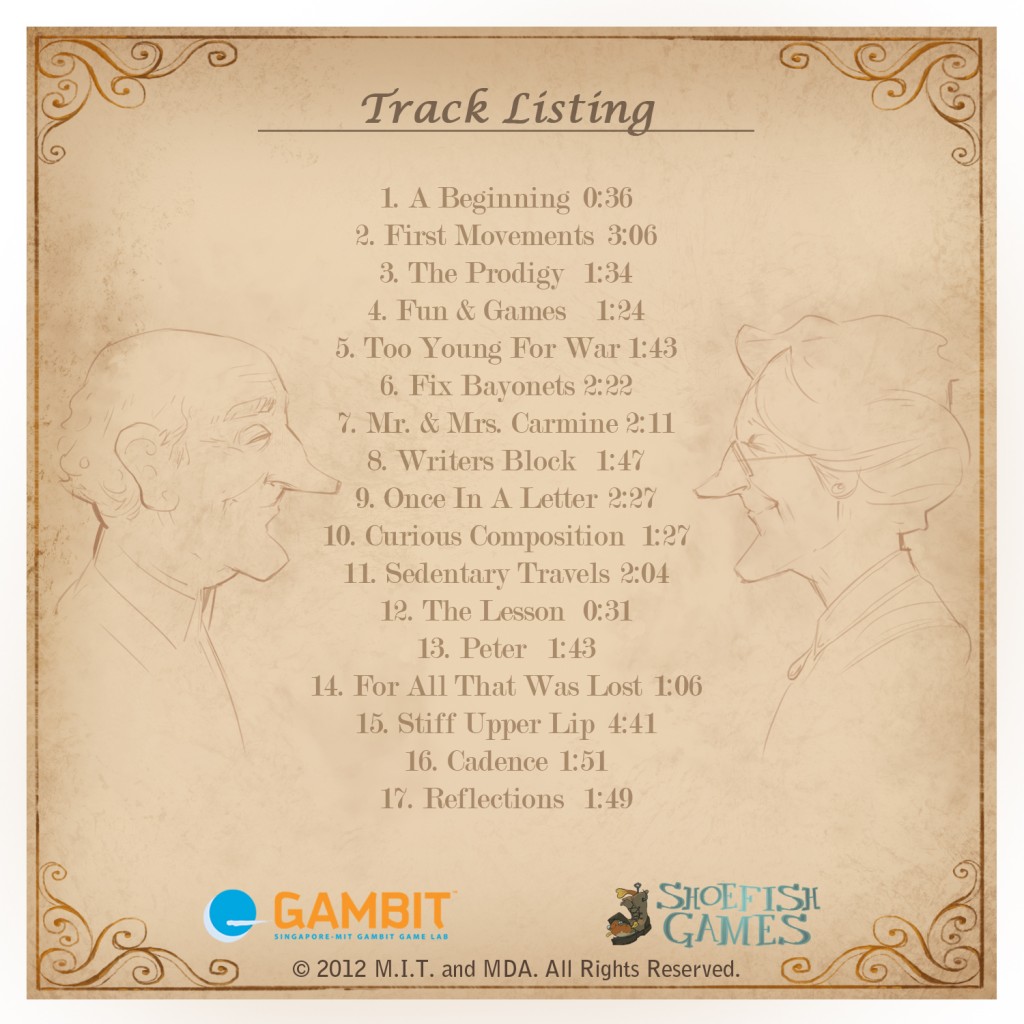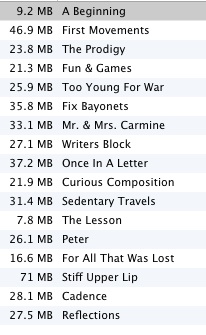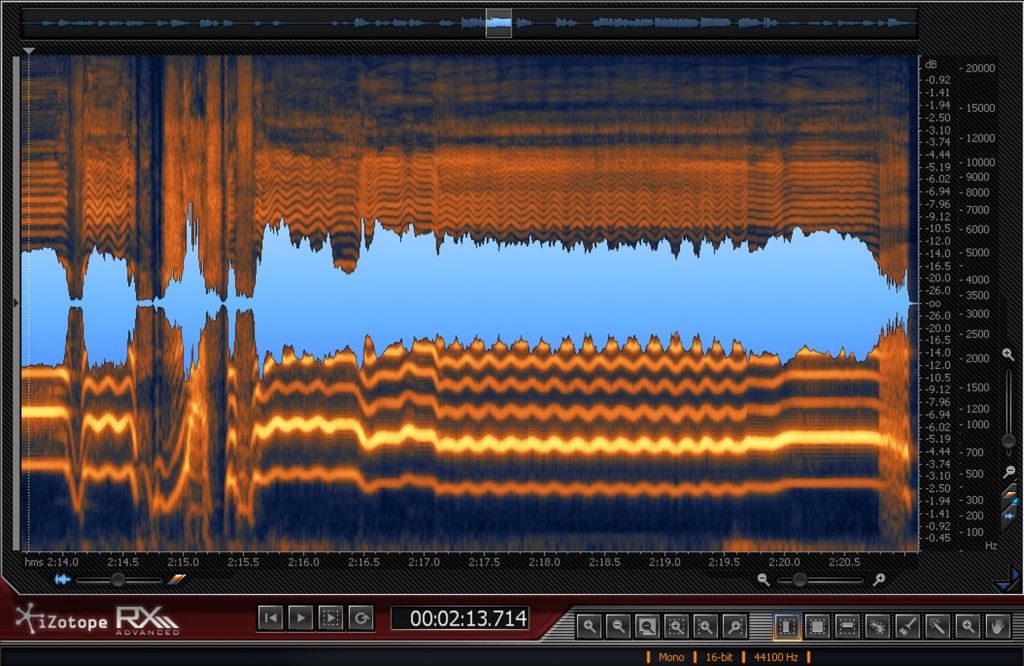There Could Be…
This is the last in the series of blog posts by Richard Gould about the making of The Last Symphony.
On Completion of “The Last Symphony”, several people enquired whether or not there was a soundtrack to accompany the game. My response was always “there could be”… and with that somewhat ambiguous answer, I embarked on a personal journey to create my first ever soundtrack. The GAMBIT program had ended, I had cleared my desk and said goodbye to some dear friends, but my journey with “The Last Symphony” was not yet over. For the next month, I spent what time I could scrounge creating the official soundtrack, which can be downloaded for free here.
In creating the soundtrack, I faced several challenges. The first most glaring issue was that the musical content within the game only totaled about 10m. Hardly long enough for a respectable soundtrack. Not only that, but many of the pieces were only 30s or so in length because they were designed to layer, evolve over time and loop. These techniques are key to allowing limited audio content to be more dynamic and create more variation in non-linear mediums (such as a video game), but the fixed nature of CD audio meant I couldn’t utilize these features for the soundtrack.
Clearly I needed more music, so I decided to use the looped sections I had created for the game as the climactic moments for larger pieces of music. I planned to build up to and tail away from these moments so essentially I was adding content to extend compositions that already existed.
With that done I had twelve full tracks, each now a more reasonable length. Ten from the story pieces, one piece from the end credits, and the opening sound of the orchestra tuning up that plays at the main menu. The other five pieces on the album aren’t in the original game itself, but were instead ‘inspired’ by it and just as the other pieces from within the game do, they also relate directly to the narrative. Much of this new musical content came from that initial piano sketch I mentioned previously from which I developed all of the music. I think this approach really helped keep some sense of cohesion between all the pieces because in some sense, they all come from one source.
So with the soundtrack, I was able to expand some of the musical content beyond the barrier of 30s loops that I faced during production and I got to tell some more of the story musically, which had always been my goal.
One point worth noting is that as I had already recorded my live instrumentation, I didn’t have any live players to hand for the new pieces or the extended sections. In some cases I was able to use harmonization techniques to actually reuse a performance over a different harmonic backing. In this way I was able to create more original music that contained live instrumentation without having to do further recording sessions. I’d tell you where this happens, but that would spoil the fun! In one case, I actually had to pervert the last note of one of the live solos because on its first instance I wanted it to sustain a note before repeating whereas in the performance I recorded, it moves quickly to another note. To solve this, I had to crossfade the “live” track with a sample instrument playing the same note so that is seemed to sustain.
Final Orders
The finishing touches
So with all the tracks composed, there were just a few steps left to go. First I had to decide on the track order. In the end I went with a chronological order that follows the narrative. We begin with the birth of our principal characters, then the music tracks the lives of the Carmine siblings through the years. I carried out this process by using an iTunes playlist.
I then began a critical listening phase where I humbly attempted to “Master” the tracks using some sensitive EQ and Compression. During this process I listened (ad nauseum) through a range of playback devices, making constant notes, revisiting, re-editing, re-bouncing and beginning the process again. As I did so, I noticed some audible “pops” and other artifacts that I couldn’t account for. I consulted with Matthew Hines, an audio professional at iZotope, who hypothesized that the pops might be the result of a too short attack on some of the sample instruments. I sent him the few culprit tracks which he worked his magic on them and de-clicked them using iZotope’s RX audio editing software.
Alex Kintner, an artist on “The Last Symphony” then provided the wonderful artwork for the soundtrack. I wrote the liner notes including a note of thanks to all those involved and then a document that talks about each track, describing some of the melodic and harmonic thematic concepts I employed. This document is now bundled with the free download of the soundtrack, which was released on November 6th of 2012. On that day, my journey with the Carmine siblings came to an end.
Richard Gould is a Composer, Sound Designer and Voice-Over artist from the United Kingdom. Examples of his work can be found on http://www.hexanyaudio.com. He blogs regularly about the topic of Sound Design on http://www.audioblackholes.com. Feel free to contact him by email <audioblackholes@gmail.com>.





